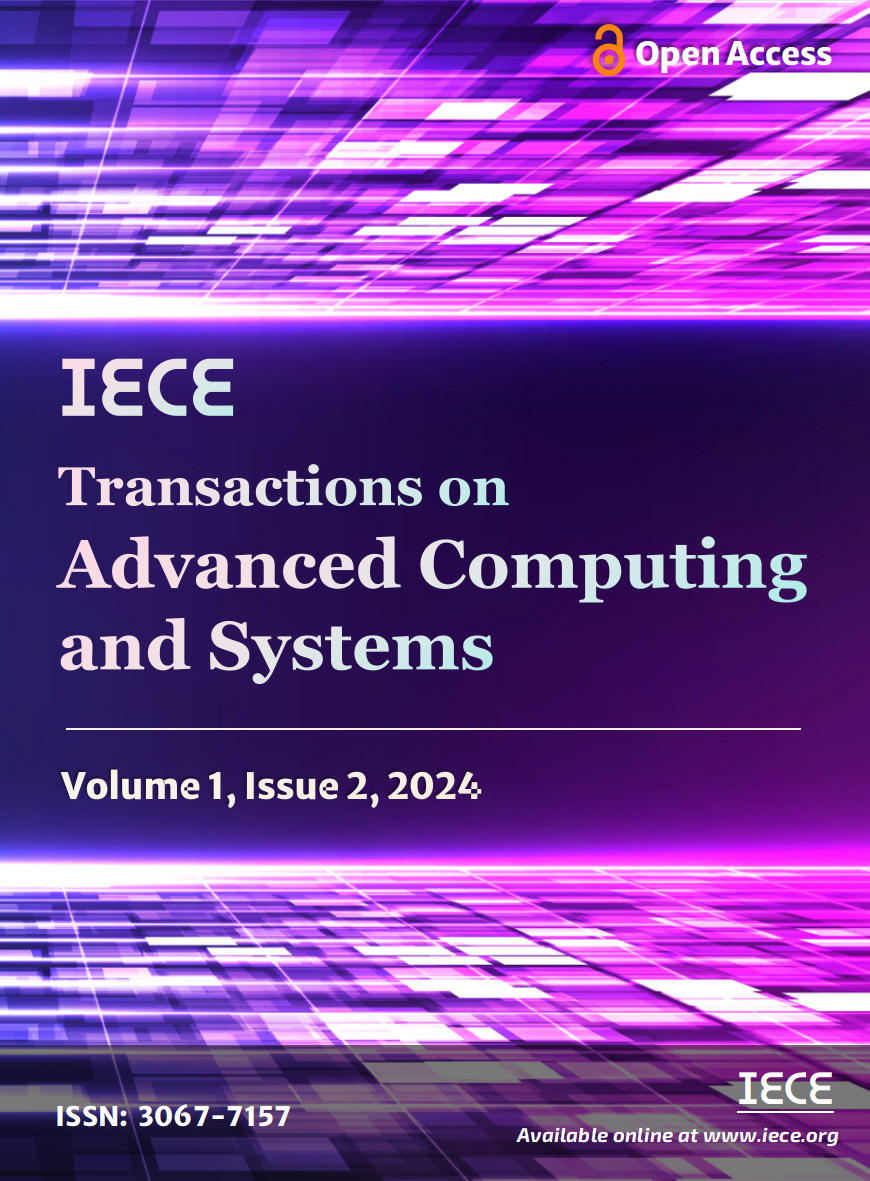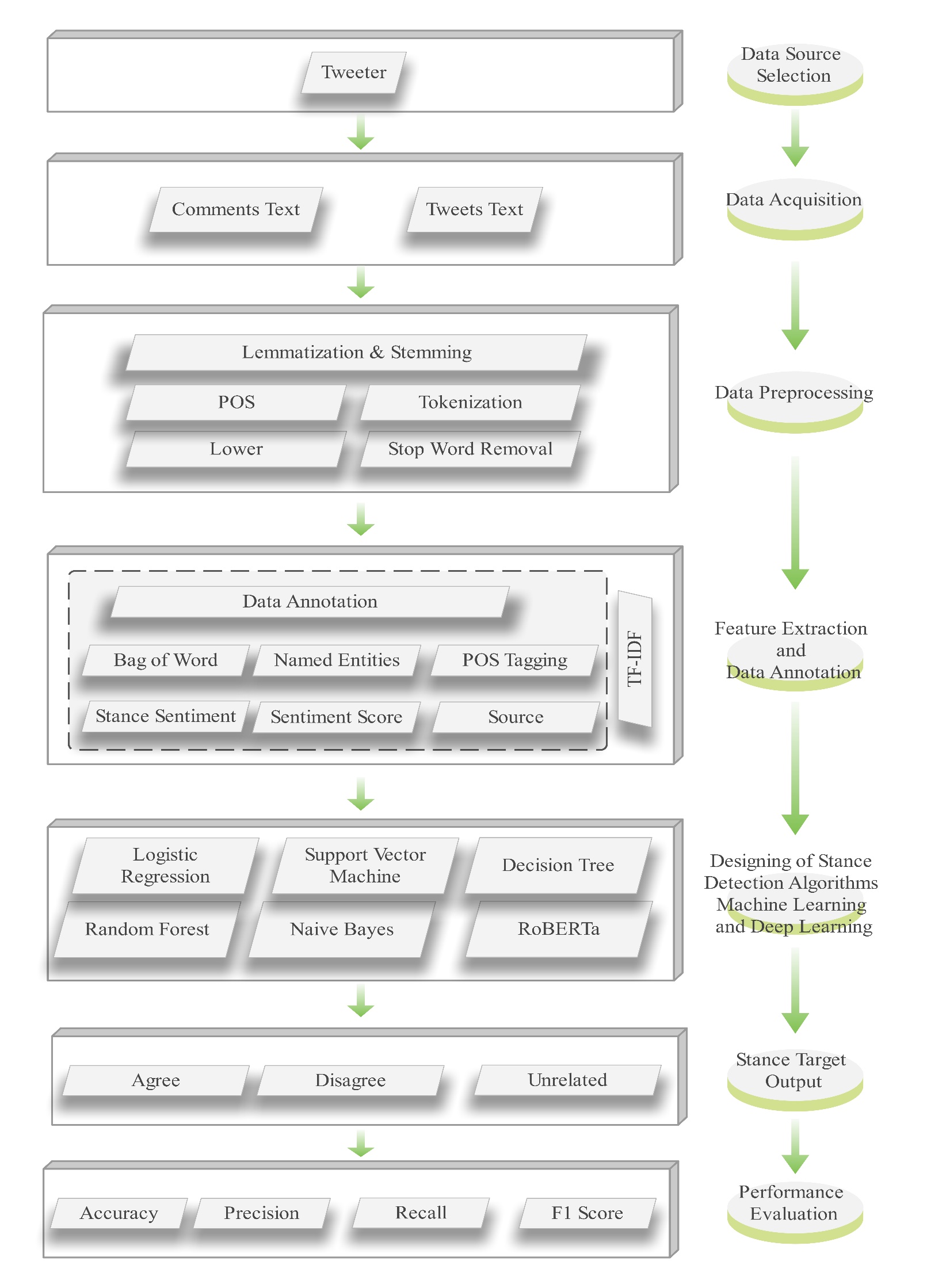Abstract
Stance detection identifies a text’s position or attitude toward a given subject. A major challenge in Roman Urdu is the lack of a publicly available dataset for political stance detection. To address this gap, we constructed a high-quality dataset of 8,374 political tweets and comments using the Twitter API, annotated with stance labels: agree, disagree, and unrelated. The dataset captures diverse political viewpoints and user interactions. For feature representation, we employed TF-IDF due to its effectiveness in handling high-dimensional, context-sensitive Roman Urdu text. Several machine learning classifiers were evaluated, with Random Forest achieving the highest accuracy of 95%. Additionally, we fine-tuned the transformer-based RoBERTa model, which outperformed traditional methods with 97% accuracy. Our results demonstrate the potential of combining machine learning and deep learning for stance detection in low-resource languages. This study not only introduces a novel dataset but also provides a robust evaluation of methods, highlighting the importance of modern AI techniques in processing informal and multilingual text data.
Keywords
stance
roman urdu
machine learning
SVM
random forest
logistic regression
naïve bayes
decision tree and RoBERTa
Data Availability Statement
Data will be made available on request.
Funding
This work was supported without any funding.
Conflicts of Interest
The authors declare no conflicts of interest.
Ethical Approval and Consent to Participate
Not applicable.
Cite This Article
APA Style
Khan, B., Khan, K., Khan, F. M., Noureen, H., Ali, A., & Shah, M. (2024). Comparing Fine-Tuned RoBERTa with Traditional Machine Learning Models for Stance Detection in Political Tweets. IECE Transactions on Advanced Computing and Systems, 1(2), 78–96. https://doi.org/10.62762/TACS.2024.928069
Publisher's Note
IECE stays neutral with regard to jurisdictional claims in published maps and institutional affiliations.
Rights and permissions

Copyright © 2024 by the Author(s). Published by Institute of Emerging and Computer Engineers. This article is an open access article distributed under the terms and conditions of the Creative Commons Attribution (CC BY) license (
https://creativecommons.org/licenses/by/4.0/), which permits use, sharing, adaptation, distribution and reproduction in any medium or format, as long as you give appropriate credit to the original author(s) and the source, provide a link to the Creative Commons licence, and indicate if changes were made.


 Submit Manuscript
Edit a Special Issue
Submit Manuscript
Edit a Special Issue

 Copyright © 2024 by the Author(s). Published by Institute of Emerging and Computer Engineers. This article is an open access article distributed under the terms and conditions of the Creative Commons Attribution (CC BY) license (https://creativecommons.org/licenses/by/4.0/), which permits use, sharing, adaptation, distribution and reproduction in any medium or format, as long as you give appropriate credit to the original author(s) and the source, provide a link to the Creative Commons licence, and indicate if changes were made.
Copyright © 2024 by the Author(s). Published by Institute of Emerging and Computer Engineers. This article is an open access article distributed under the terms and conditions of the Creative Commons Attribution (CC BY) license (https://creativecommons.org/licenses/by/4.0/), which permits use, sharing, adaptation, distribution and reproduction in any medium or format, as long as you give appropriate credit to the original author(s) and the source, provide a link to the Creative Commons licence, and indicate if changes were made. 
